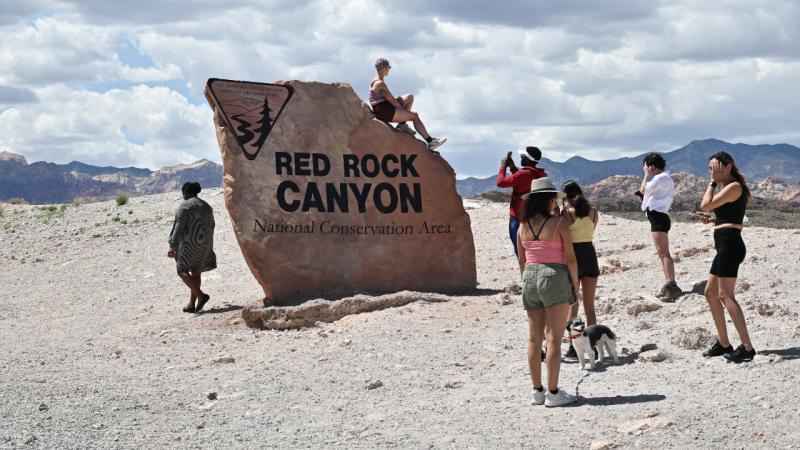Even as overall consumer confidence in the United States is dipping, due to anxiety over inflation and high interest rates, Americans are still travelling, both at home and overseas. And after a strong summer travel season, the hospitality industry has enjoyed a solid third quarter, buoyed by the return of business travel.
According to the US Travel Association’s August Recovery and Growth Insights Dashboard (developed in association with Tourism Economics), American consumers continue to be willing to travel for leisure, despite economic headwinds. The report shows Americans are keen to go overseas, with the number of Americans going abroad in July exceeding pre-pandemic levels by 10 percent. The demand for long-haul travel does not appear to be going anywhere, According to the US Consumer Confidence Index published in late August by the Conference Board, 21.8 percent of Americans plan on vacationing abroad in the near future (up from 17.7 percent in June), in spite of economic headwinds.
TripAdvisor’s latest Seasonal Travel Index, providing an outlook for international travel patterns and demand between September 1 and November 30, paints a similar picture. Among U.S. travelers surveyed, more than half are planning to travel more this fall than last, either overseas or at home.
However, how they plan to travel may be a differentiator. All of the data shows cost and affordability are still top of mind. According to TripAdvisor, a higher cost of living due to inflation is leading two in five travelers to alter travel plans by taking shorter trips closer to home. For those who are looking to travel overseas, many report waiting until the end of the year to take advantage of seasonal discounts.
What’s ahead for domestic US travel
Domestically, the travel market has remained relatively steady for the past year. However, according to US Travel, disposable income will likely decline toward the end of the year as a projected economic slowdown leads to softer wage increases. Additionally, savings continue to erode, as increasing interest rates make it more expensive to borrow and student loan repayments, which were temporarily suspended since the Covid era, resume in October.
Even so, said Aran Ryan, director of industry studies at Tourism Economics, despite the possibility of a slowdown later this year, “The economy has remained resilient [and] the impact of this slowdown on lodging demand will be limited, as group and business travel rebuilds, international visitors return, and leisure travelers find room in budgets to prioritise travel.”

According to STR and Tourism Economics data presented earlier this year, although secondary and tertiary markets in drive-to locations saw huge increases during and since the pandemic, urban and destination markets are positioned the best moving forward. According to CRBE Hotels Research, urban locations were the only category to post year-over-year gains between the second quarter of 2022 and the comparable period this year. The other five location types contracted versus Q2 2022.
To further showcase the strength of urban markets, STR data shows that,
among the top 25 domestic markets, San Francisco saw the largest year-over-year occupancy increase (+8.2 per cent to 76.9 per cent). New York City posted the highest ADR (+10.7 per cent to US$256.33) and revpar (+19.7 per cent to US$214.86) increases. These numbers are in part attributed to a resurgence of business travel.
Getting back to business
After a busy summer vacation season, companies were pining their hopes on corporate business travel picking up momentum this fall.
According to the US Travel Association, group hotel bookings from DMOs and CVBs experienced their fifth consecutive month of growth in July and was up two per cent compared to July 2019.
The US Travel Recovery and Growth Insights Dashboard reports that most airline and hospitality companies are fairly bullish on business. In its report, several chief executive officers mention how legislation focused on infrastructure spending is resulting in growing demand for longer-term accommodations around the country.
“[There are] 1.8 million companies contracting accommodations for infrastructure workers,” said Geoff Ballotti, CEO of Wyndham. “[Many are] seeking economy daily rates with average length of stay approaching 30+ nights versus midscale and above average daily rate. It is a very large and underpenetrated segment. And we think there's plenty of space for continued room growth there.”
Elsewhere on the business travel front, Hilton CEO Chris Nassetta sees growth from groups. “On the group side, we continue to see very positive trends. [Businesses are] feeling quite good, particularly the small and medium-sized businesses. They're travelling more and feeling reasonably good about soft landing. [There continues to be] pent-up group demand. As we look to the back half of the year, we expect continued strength driven by recovery in international markets, business transient and group demand.”
Southwest Chief Executive Officer Bob Jordan is quoted as saying,
“Small and medium businesses, government and educators are strong points for us…We gained additional passenger market share in the second quarter and exited the quarter seeing more unique travelers flying for business than we saw pre-pandemic.”
One other boost from the business travel side comes from so-called bleisure activities. According to the Global Business Travel Association, business travelers are more frequently blending business and personal travel than in 2019, with 42 percent adding leisure days to business trips.